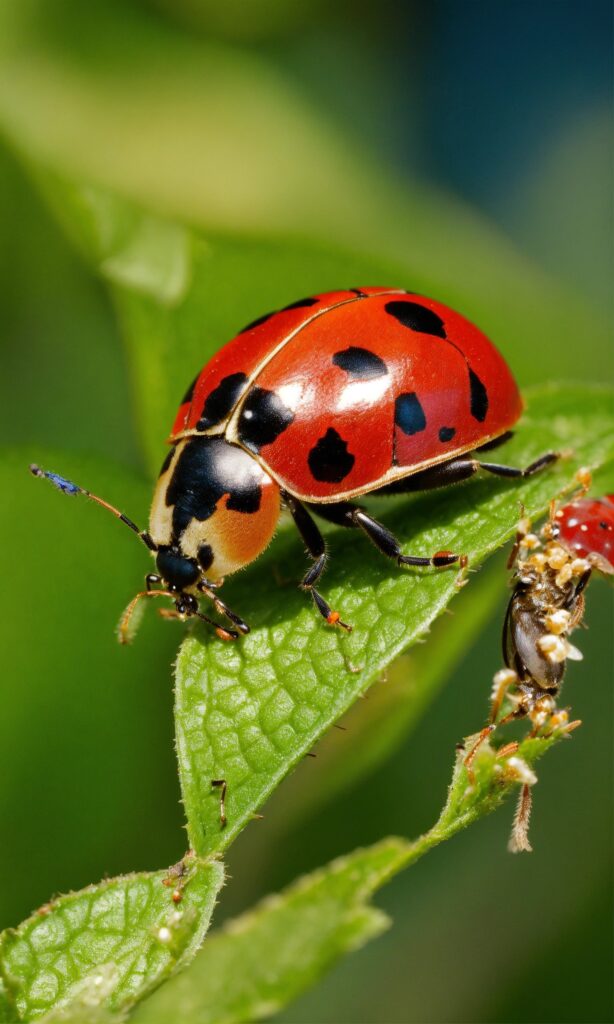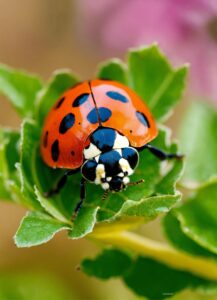The use of pesticides in agriculture, while essential for crop protection, poses significant risks to the environment and human health. In a groundbreaking study, researchers at Pennsylvania State University have discovered a sustainable and eco-friendly alternative to traditional pesticides using the scents emitted by ladybugs.
The Need for Sustainable Pest Control
Traditional pesticides have long been a staple in agricultural practices, effectively controlling crop pests but also causing harm to non-target organisms and the environment. The need for sustainable pest control solutions has never been more critical, given the growing concerns about pesticide resistance and environmental damage.
Unveiling Nature’s Arsenal
Led by Sara Hermann of the Penn State College of Agricultural Sciences, the research team focused on understanding the chemical communication between ladybugs and aphids. Their research, published in the journal Basic and Applied Ecology, highlights the role of ladybug scents in deterring aphids from feeding on plants.

Research Focus
Hermann and her team’s research goes beyond the traditional approach of studying predator-prey interactions. Instead, they delve into the chemical signals that ladybugs use to communicate danger to aphids, disrupting their feeding behavior and reproductive cycles.
Chemical Communication
Ladybugs emit a blend of volatile organic compounds that act as a warning signal to aphids, deterring them from settling on plants. By identifying these compounds, the researchers have unlocked a natural, eco-friendly method of pest control that harnesses the power of nature’s own defenses.
Power of Scent
The key to the success of this approach lies in the identification of the compounds responsible for the deterrent effect on aphids. By isolating and synthesizing these compounds, researchers have developed a novel pest management tool that mimics the natural defense mechanisms of ladybugs.
Identifying Compounds
Through meticulous research, Hermann and her team have identified specific compounds, such as beta-caryophyllene and beta-farnesene, that are responsible for the repellent effect on aphids. These compounds are now being explored for their potential use in commercial pest control products.
Pest Deterrence Mechanism

When exposed to the scent of ladybugs, aphids exhibit reduced attraction to plants, spend less time feeding, and show a decrease in population size. This natural deterrent mechanism has the potential to significantly reduce the reliance on chemical pesticides in agriculture.
A Sustainable Solution
The use of ladybug scents as a pest control measure offers several key benefits over traditional pesticides.
Benefits Over Pesticides
- Reduced environmental impact: Ladybug scents are natural compounds that do not persist in the environment or accumulate in food chains.
- Preservation of beneficial insects: Unlike pesticides, which can harm beneficial insects like bees and butterflies, ladybug scents specifically target pest insects.
- Resistance management: The use of ladybug scents can help mitigate the development of resistance in pest populations, a major concern with chemical pesticides.
Commercial Feasibility
With a provisional patent application filed for their innovation, Hermann and her team are working towards commercializing the use of ladybug scents in agriculture. The scalability and cost-effectiveness of this approach make it a viable alternative to traditional pesticides.
Environmental Impact
Embracing nature-inspired practices like the use of ladybug scents is crucial for sustainable agriculture. By working in harmony with nature, researchers like Sara Hermann are paving the way for a healthier and more sustainable future for agriculture.
Conclusion
The research conducted by the team at Pennsylvania State University highlights the potential of nature-inspired solutions in addressing the challenges of modern agriculture. By harnessing the power of ladybug scents, researchers have developed a sustainable and effective alternative to traditional pesticides, offering hope for a future where agriculture is in harmony with nature.
Click Here For More Interesting Information
FAQs
1. Are ladybug scents safe for humans?
Ladybug scents are non-toxic to humans and animals, making them a safe alternative to chemical pesticides.
2. How do ladybug scents compare to traditional pesticides in terms of effectiveness?
While traditional pesticides are often more immediately effective, ladybug scents offer a sustainable, long-term solution that can help prevent the development of pesticide resistance.
3. Can ladybug scents be used in organic farming?
Yes, ladybug scents are a natural and organic pest control method that is compatible with organic farming practices.
4. Do ladybug scents harm beneficial insects?
No, ladybug scents specifically target pest insects and do not harm beneficial insects like bees and butterflies.
5. How soon can farmers expect to see the benefits of using ladybug scents?
The effectiveness of ladybug scents may vary depending on the crop and pest population, but farmers can typically expect to see results within a few weeks of application.










